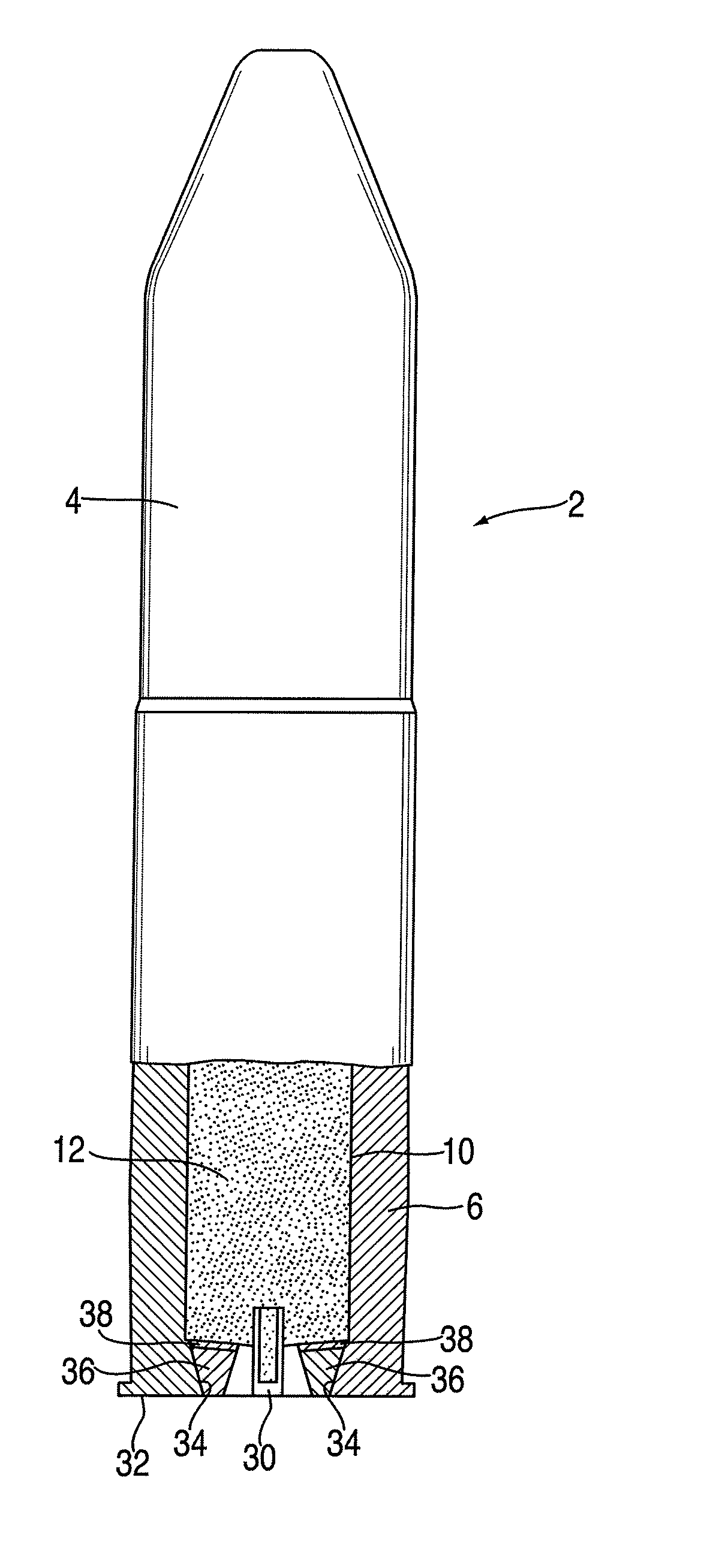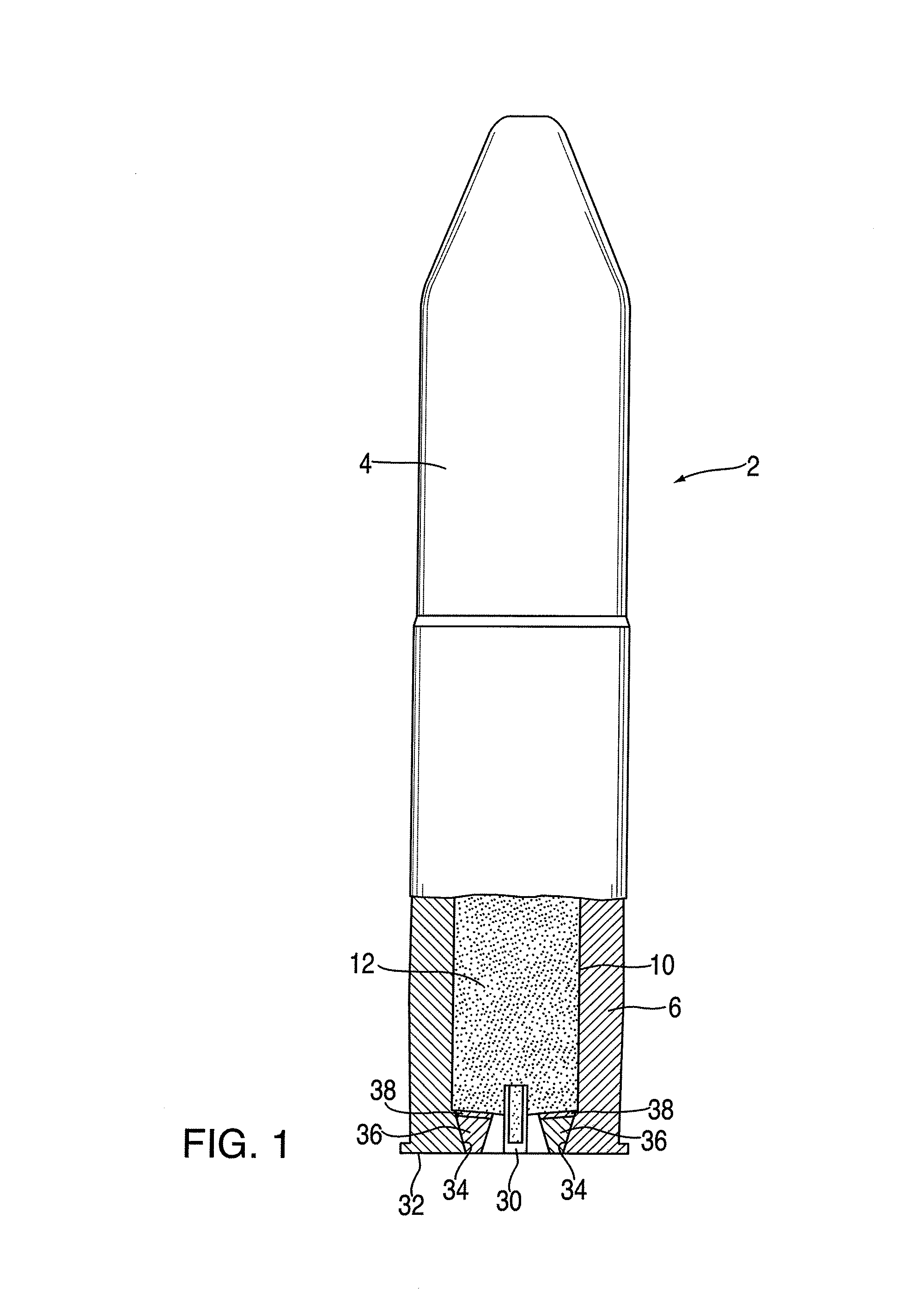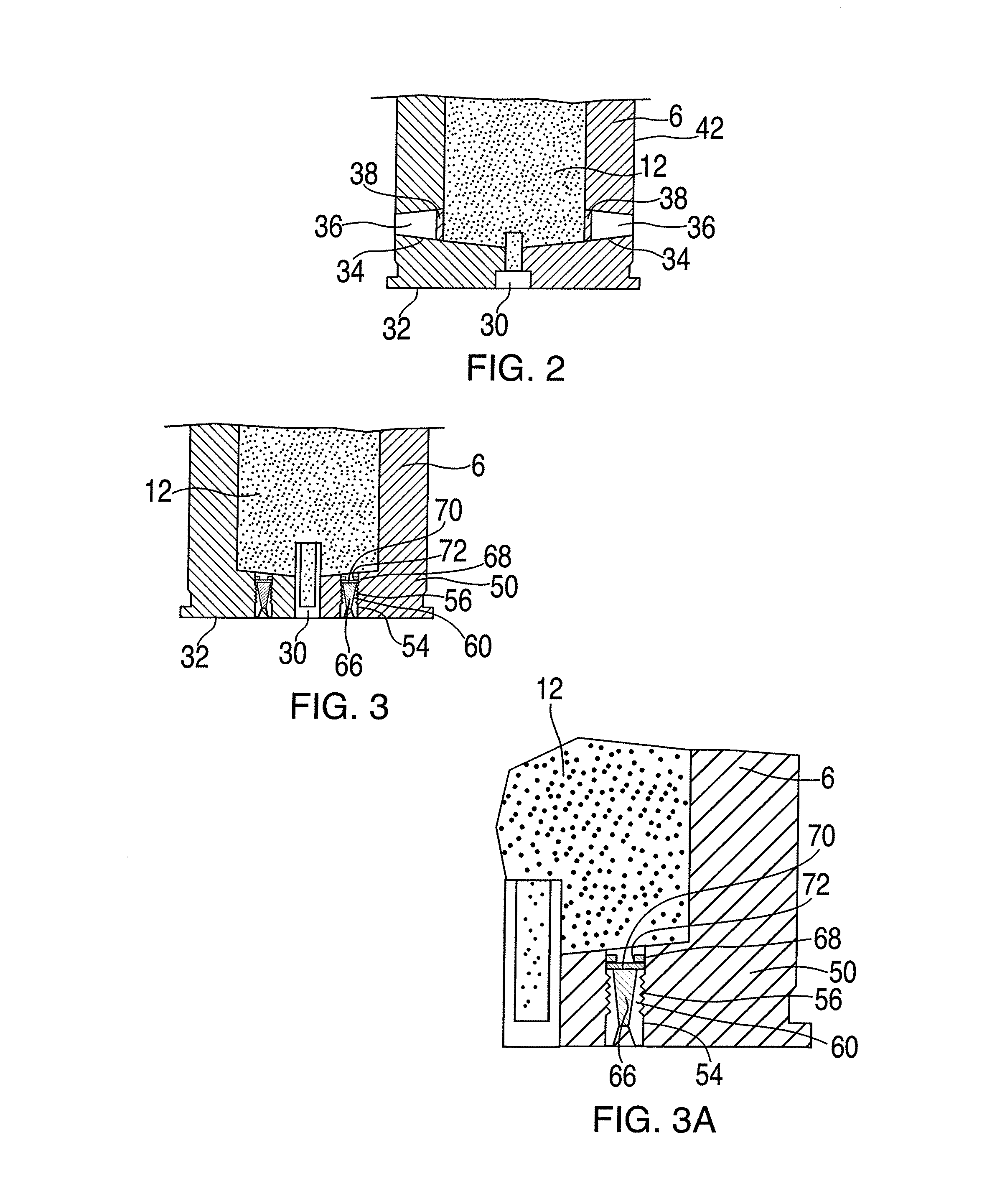Pressure-relief system for gun fired cannon cartridges
a pressure relief system and cartridge technology, applied in the direction of ammunition projectiles, weapons, ammunition loading, etc., can solve the problems of significant damage, reach or exceed about 220° c., storage or transportation system, and impede the separation of the cartridge shell
- Summary
- Abstract
- Description
- Claims
- Application Information
AI Technical Summary
Benefits of technology
Problems solved by technology
Method used
Image
Examples
Embodiment Construction
[0048]The preferred embodiments of the present invention will now be described with reference to FIGS. 1 to 3 of the drawings. Identical elements in the various figures are designated with the same reference numerals.
[0049]A cartridge munition 2 shown in FIG. 1 consists of a projectile 4 and a cartridge shell 6. Cartridge shell 6 includes a propulsion chamber 10 in which a propulsive charge 12 is positioned.
[0050]Cartridge 2 possesses a caliber of from 40 mm, for example, and is fired from a tube weapon (not shown) with a twist, for which purpose the projectile possesses a guide- or twist-band (indicated only).
[0051]Propulsive charge 12 is ignited pyrotechnically by means of an igniter cap 30 whereby igniter cap 30 is mounted in the center of the base 32 of cartridge shell 6.
[0052]Passages are provided between the propulsion chamber 10 and base 32 of cartridge shell 6. Here, conical channels 34 decrease in size in the direction of base 32 of cartridge shell 6. Channels 34 possess a ...
PUM
 Login to View More
Login to View More Abstract
Description
Claims
Application Information
 Login to View More
Login to View More - R&D
- Intellectual Property
- Life Sciences
- Materials
- Tech Scout
- Unparalleled Data Quality
- Higher Quality Content
- 60% Fewer Hallucinations
Browse by: Latest US Patents, China's latest patents, Technical Efficacy Thesaurus, Application Domain, Technology Topic, Popular Technical Reports.
© 2025 PatSnap. All rights reserved.Legal|Privacy policy|Modern Slavery Act Transparency Statement|Sitemap|About US| Contact US: help@patsnap.com



